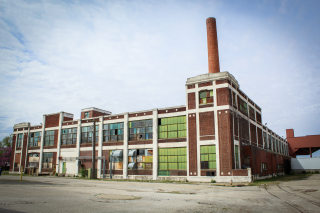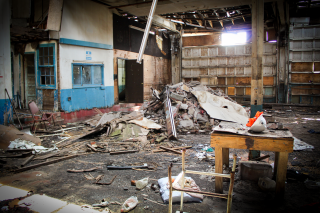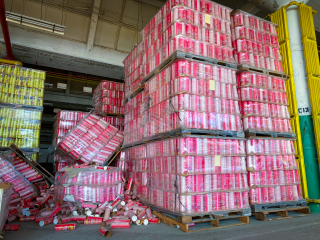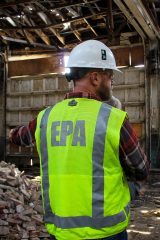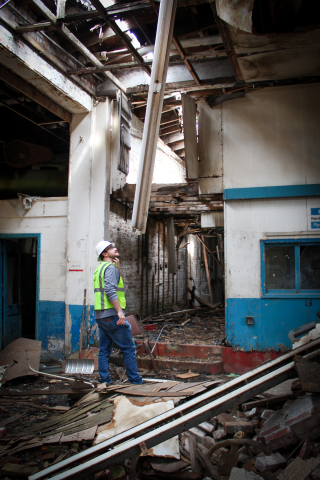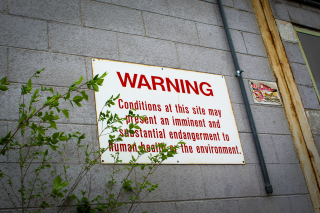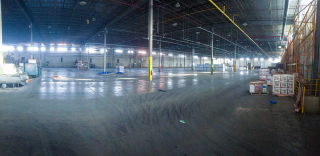Celebrating Cleanup of HPI Chemical Products Superfund Removal Site in St. Joseph, Missouri
– EPA Region 7 Feature –
By Olivia Bailey, Public Affairs
As of Feb. 25, 2025, what was once a complex industrial site posing a potential environmental threat in St. Joseph, Missouri’s downtown area has been transformed into a symbol of resilience.
The cleanup at HPI Chemical Products Inc., a Superfund site that once harbored thousands of abandoned containers holding pesticides, herbicides, and waste – is finally complete.
“Every American should have access to clean air, land, and water,” shared EPA Administrator Lee Zeldin when he announced EPA’s “Powering the Great American Comeback” Initiative in early February 2025.
Pillar 1 of this initiative is ensuring clean air, land, and water for every American. Administrator Zeldin is committed to cleaning up hazardous sites like HPI to Power the Great American Comeback, while fulfilling EPA’s statutory obligations.
“This is a win for public health, a win for the environment, and a win for the people of St. Joseph,” said EPA Region 7 Administrator Jim Macy. “We’re proud of the outcome and of the community that stood strong with us through it all.”
Background
For nearly two decades, the cluster of former HPI facilities, located at several sites within the city, were sources of great concern and environmental anxiety for St. Joseph’s residents. Improper waste storage methods, dangerous modes of manufacturing, and other careless actions taken by HPI resulted in stacks of chemical drums, wastewater containers, and more – ranging from single-ounce bottles to 55-gallon drums and 8,000-gallon liquid storage mixing tanks left behind.
After years of attempts to get HPI into regulatory compliance, a federal court ordered the company to shut down their business and operations in August 2022. This action stopped more environmental damage from accumulating at the HPI sites, while also creating a pathway for cleanup efforts.
From August through December 2022, EPA Region 7’s Resource Conservation and Recovery Act (RCRA) team oversaw approximately 270 semitruck loads of ingredients and products returned to HPI clients. This saved taxpayer dollars, as the materials did not require disposal.
In 2023, the RCRA program referred HPI’s facilities to the Region’s Superfund program for removal actions. EPA Region 7’s Superfund Emergency Response and Removal team assessed the wastes that were improperly stored at the HPI sites to determine the nature of the remedy appropriate for the situation.
These sites were then designated as a time-critical Superfund removal project, indicating its status as one of the nation’s most hazardous known locations requiring urgent and complex cleanup.
“These locations were dangerous – a real risk to public health and the environment,” said Joe Davis, the site’s on-scene coordinator (OSC) from EPA Region 7. “The buildings were subject to routine break-ins, and drums and containers on the ground levels could be seen through broken windows. We knew that substantial action would be necessary to secure these sites, in order to protect St. Joseph’s people and its natural resources.”
The Cleanup Journey
The cleanup was no small feat. When HPI had been forced to shut down in 2022, a significant quantity of chemicals had been left behind, which posed unique challenges for removal actions at the HPI sites.
Donning personal protective gear, EPA crews and contractors took inventory of the multitude of drums and totes, screening for unknown contents to determine any potential hazards.
“For any cleanup action, we need to create a hazardous waste profile for each particular instance of waste we discover – to list the chemical properties of a particular waste, so that a determination can be made in terms of classification and shipping requirements,” Davis explained. “Typically, at a cleanup site, we might expect to create between 10 and 15 hazardous waste profiles. HPI set what I believe might be a record for Region 7. We ended up having to create at least 120 hazardous waste profiles to cover the variety of wastes we found at HPI.”
The team also worked to safely filter and re-house 324,555 gallons of wastewater, as well as wash, decommission, and ship over 115,000 containers to several facilities from Kansas to Tennessee that help recycle or dispose of hazardous and non-hazardous materials.
Securing and removing dry materials located at the HPI sites was also a major undertaking of the cleanup operation. This included roughly 125 cubic yards of bulked excavated materials from a contaminant pit; dry formulations from HPI’s manufacturing process; cleanout from the former company’s air mill and hoppers; and vacuuming hazardous accumulated particulate matter and dust from a two-story, air mill room at the southeast section of the HPI property near Sylvanie Street and South 3rd Street.
These actions, undertaken and supervised by EPA, ensured that no lingering toxins could pose a threat to the environment or community members.
The years of collaboration between EPA, U.S. Department of Justice, Missouri Department of Natural Resources, local officials, and concerned citizens to clean up the Superfund site soon paid off. Transparency through regular community updates and public notices ensured that residents stayed informed and engaged every step of the way.
A Community Victory
While EPA led the technical work, local voices played a crucial role in pushing for a cleanup process that addressed community concerns.
“For too long, we have had to live with uncertainty,” shared community member Danny Robinson, business manager of the International Brotherhood of Electrical Workers. “It’s been a major concern for myself and my staff for years, walking out every day and seeing a sign that reads: ‘Conditions at this site may present an imminent and substantial endangerment to human health and the environment.’ It’s good news to hear that these buildings no longer pose a danger in terms of hazardous waste.”
The successful cleanup of the HPI sites is more than a regulatory win – it’s a human one. These sites are no longer a health hazard, and though only a few of the parcels are currently labeled for reuse, the restored safety of these properties opens the door for future revitalization in downtown St. Joseph.
Looking Forward
The HPI sites throughout the city join a growing list of Superfund success stories around the country, proving that even the most daunting environmental challenges can be overcome with science, cooperative federalism, and public will.
Chemical Commodities Inc. (CCI) in Olathe, Kansas, is one of those success stories. All 1.5 acres of CCI were previously a major public health concern and are now a pollinator habitat garden. St. Joseph can now have a similar opportunity on the horizon.
As the last five drums of hazardous waste were shipped off for disposal on Feb. 25, the message was clear: a cleaner, safer future is possible – and worth fighting for.
Learn more at these EPA links:


